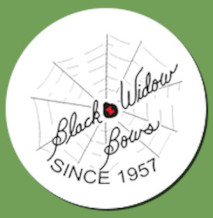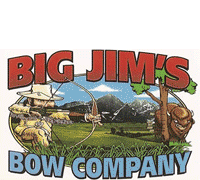I think Shaun is out of town for a while (guiding/hunting for a month) so I'll answer a couple questions about the dog.
His dog and my dog are cousins (the mothers are full sisters) bred by the same lady in North Carolina. These are standard sized (that is 15-20 lb) smooth haired dachshunds (Teckels) of European lineage. These dogs are quintessential hunting dogs in Europe, although the wire haired version is more prevalent today than the smooth. They are considered versatile hunting dogs.
The breeder breeds for a versatile hunting dog, and the traits that type of breeding promotes are the same traits that lead to a good blood tracking dog. The natural ability is there, the focus, intelligence, and prey drive, and the owner/handler has to help develop that through training. It is not a very difficult process - although takes a commitment of time and some understanding of dog behavior - with these dogs, and frankly you learn as much or more than the dog does with the training. Eventually, if things work out, you become a tracking or hunting TEAM with the dog.
Dogs from this this bloodline very often will follow simple blood tracks at 8 weeks or less of age - the hunting is in thier nature - and to them it is not "following a scent line" but "killing something to eat". The breeder works with the pups with deer meat/blood at a VERY young age and they show interest in the smell as soon as the eyes open. Don't think of a beagle following a rabbit...think of a coyote following a wounded animal. Our Oskar was doing 300+ yard practice tracks using diluted deer blood with multiple turns that were laid out 12 hours earlier by the time he was 10 weeks old. He found his first real deer at 15 weeks old. These dogs can be phenomenal trackers. I would expect that a well trained and handled dog from this bloodline (and Shaun is a great handler) would readily complete this kind of a recovery (40 hour) at two years old.
You also have to forget alot of what you know about tracking from a human perspective - a gutshot, while not leaving alot of visible blood, leaves a profusion of scent for a dog - clear liquid, stomach/intestinal material etc. Gutshot deer are among the easiest for a dog while hardest for a human to track.
One more thing to demonstrate the quality of this breeder's dogs - as of last Spring when we did the tests, our dog Oskar, and Shaun's dog's mother (Enyo) were the only dogs I'm aware of in the US that have passed both the VSwP 20 hour and 40 hour tests with 2 Prize 1 awards. This is a very demanding blood tracking test used in Europe to assess both the dog's ability and the handler/dog teamwork.
Working with these dogs over the last several years has really opened our eyes to the possibilites and reality of a good blood dog.
Ryan














